UPSC Daily Current Affairs- 19th July 2023 | Current Affairs & Hindu Analysis: Daily, Weekly & Monthly PDF Download
GS-I
About Solomon Islands

Why in News?
The Prime Minister of Solomon Islands while in China signed nine agreements and memorandums, including a police cooperation plan.
- The new agreements come after the Solomon Islands signed a security pact with China last year, raising fears of a military build-up in the region
Key facts about Solomon Islands
- It is an island country consisting of six major islands and over 900 smaller islands in Oceania.
- It is situated in the southwest Pacific Ocean, approximately 2,000 km to the northeast of Australia.
- Capital: Its capital, Honiara which is located on the largest island, Guadalcanal.
- The terrain is mountainous and heavily forested.
- More than 90% of the islanders are ethnic Melanesians.
- Once a British protectorate, the Solomon Islands achieved independence as a republic in 1978.
- Language:
- There are 63 distinct languages in the country, with numerous local dialects.
- English is the official language, but Pijin is the common language for the majority of people.
Source: DTE
GS-II
India achieves record DPT3 vaccination coverage in 2022: WHO
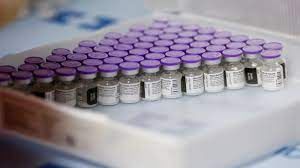
Why in News?
The coverage rate for DPT3 vaccines (diphtheria, pertussis, and tetanus) in India reached an all-time high of 93% in 2022, surpassing the pre-pandemic record of 91% in 2019.
- This significant increase from the 85% coverage in 2021 was reported by the World Health Organization (WHO).
What is DPT3?
- DPT3 vaccines refer to a combination vaccine that provides protection against three infectious diseases: diphtheria, pertussis (whooping cough), and tetanus.
- The “DPT” in DPT3 stands for the initials of these three diseases:
- Diphtheria: It is a bacterial infection that primarily affects the respiratory system. It can cause severe throat and nose congestion, difficulty breathing, and in severe cases, it can lead to heart and nerve damage.
- Pertussis (Whooping Cough): It is a highly contagious respiratory infection caused by the bacterium Bordetella pertussis. It is characterized by severe coughing fits, often accompanied by a “whooping” sound when gasping for breath. Pertussis can be particularly dangerous for infants and young children.
- Tetanus: Also known as lockjaw, is a bacterial infection caused by the bacterium Clostridium tetani. It enters the body through wounds or cuts and produces a toxin that affects the nervous system, leading to muscle stiffness and spasms, particularly in the jaw and neck muscles.
WHO records on immunization
- DPT3 Coverage Recovery: The WHO South-East Asia Region saw the DPT3 coverage recover to pre-pandemic levels of 91% in 2022, a significant increase from 82% in 2021.
- Measles Vaccine Coverage: The region also witnessed a six percent improvement in measles vaccine coverage, rising to 92% in 2022 from 86% in 2021.
- Zero-Dose Children: The number of zero-dose children (those who have not received even the first dose of the DPT vaccine) halved from 4.6 million in 2021 to 2.3 million in 2022.
- Partially Vaccinated Children: The number of partially vaccinated children (those who received at least one dose but not the complete three-dose series) decreased from 1.3 million in 2021 to 650,000 in 2022.
Source: The Hindu
EC to issue Online Airtime Vouchers for Campaigning
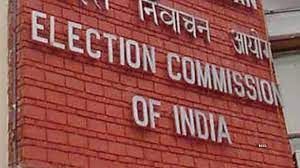
Why in News?
The Election Commission of India has implemented a fully online process for allotting airtime to political parties for campaigning on Akashvani and Doordarshan.
- The new system replaces the traditional method of collecting physical vouchers and instead issues digital time vouchers through an online platform.
Airtime Vouchers for Campaigning
- Objective: To provide equitable access to government-owned electronic media during elections for campaigning purposes.
- Legal basis: The allotment of time on public broadcasters during campaigning is governed by a scheme notified in January 1998, based on Section 39A of the Representation of People Act, 1951.
- Allotment Criteria: Each National party and recognized State party receive an equitable base time on Doordarshan (DD) and Akashvani.
- Scope for additional time: Factors such as past electoral performance, representation in the legislature, and the number of candidates fielded by the party are considered to ensure equitable distribution of airtime.
- Predefined Schedule: The date and time for telecasts and broadcasts by authorized party representatives are predetermined by Prasar Bharati, in consultation with EC and in the presence of party representatives.
Regulation of these Vouchers
- Scrutiny of Party Transcripts: Party transcripts undergo scrutiny to ensure compliance with relevant codes. These codes prohibit content that criticizes other countries, attacks religions or communities, incites violence, or engages in personal attacks.
- Role of Apex Committee: Disagreements over vetted content are referred to an Apex Committee comprising members from Akashvani and DD. The committee’s decision is final.
Significance of Digital Vouchers
- Process Improvement: The decision reflects its commitment to leveraging technology for an improved electoral process and enhanced convenience for all stakeholders.
- Eliminating Physical Collection: Political parties will no longer need to send representatives to the commission’s offices to collect time vouchers during elections.
Operational Challenges
- Limited Access: The scheme is exclusively available to national and recognized State parties, leading to concerns about its true equity.
- Conflict of Interest in the Apex Committee: The Apex Committee consists of officials from Akashvani and DD, raising concerns about potential conflicts of interest.
- Row over transcript content: These officials are expected to review their own decisions when conflicts arise with political parties over the transcript content.
Source: The Hindu
New guidelines for senior advocates in the Supreme Court
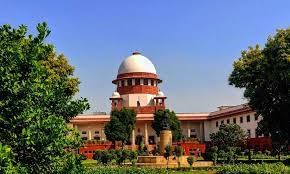
Why in News?
The Supreme Court has published new guidelines for the designation of senior advocates practicing in the Apex Court.
Background
- These guidelines come after the recent ruling delivered by a three-judge bench in a case seeking modification in the conferment of ‘senior advocate’ designation guidelines.
- The Bench modified the guidelines issued by the SC in 2018, in the aftermath of ruling in Indira Jaisingh v. Union of India ,2017.
Indira Jaisingh v. Union of India case
- In October 2018, the Apex Court released a list of “Guidelines to Regulate the Conferment of Designation of Senior Advocates” while acting on a plea filed by Indira Jaising, for greater transparency in the designation process.
- The guidelines discouraged the system of voting by secret ballot, except in cases where it was “unavoidable.”
- The ruling that decided the setting up of a “permanent committee” and a “permanent secretariat”.
- Permanent secretariat:A body tasked with receiving and compiling all applications for designation with relevant data, information, and the number of reported and unreported judgments. After this, the proposal for designation is to be published by it on the official website of the concerned court, inviting suggestions and views, which shall then be forwarded to the permanent committee for scrutiny.
- Permanent committee:The CJI-chaired committee was to consist of two senior-most SC judges, the Attorney General of India, and a “member of the Bar” nominated by the chair and other members. The Committee was to meet twice a year, at least.
- The committee then interviewed the candidate and made an overall evaluation based on a point system that gave marks for years of practice( be it as an advocate, district judge, or judicial member of an Indian tribunal), pro-bono work undertaken, judgements, publications, and a personality test.
- Once a candidate’s name was approved, it was forwarded to the Full Court to decide on the basis of the majority. The Full Court could also recall the designation of a senior advocate.
Why are the guidelines being changed?
- In February 2023, the Central Government filed an application for modification of guidelines for the designation of senior lawyers, issued by the Supreme Court after the 2017 ruling.
- The 2017 guidelines were based on a point-based system which awarded 40% weightage to publications, personality, and suitability gauged through the interview. The Centre argued that this system is subjective, ineffective, and dilutes the “esteem and dignity of the honour being conferred traditionally.”
What do the new guidelines say?
- The new guidelines prescribe the minimum age as 45 years to apply for the ‘senior advocate’ designation. However,this age limit may be relaxed by the Permanent Committee, the Chief Justice of India, or a Supreme Court judge if they have recommended an advocate’s name.
- Previously, the guidelines stated that 15 marks were set aside for publications. However,the new guidelines state that only 5 marks will be given for “publication of academic articles, experience of teaching assignments in the field of law,” and “guest lectures delivered in law schools and professional institutions connected with law” combined.
- The 2023 guidelines specify that the CJI along with “any Judge of the Supreme Court” may recommend in writing the name of an advocate for designation.
- Besides this, the weightage given to reported and unreported judgements (excluding orders that do not lay down any principle of law) has increased from 40 to 50 points in the new guidelines.
Source: IE
Veer Savarkar International Airport
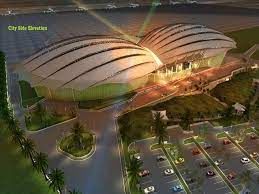
Why in News?
Prime Minister Narendra Modi inaugurated the integrated terminal building of Veer Savarkar International Airport, at Port Blair, Andaman &Nicobar. .
About Veer Savarkar International Airport
- It is located 2 km south of Port Blair.
- It is the main airport of the Andaman and Nicobar Islands of India.
- In 2002, Port Blair Airport at Andaman and Nicobar’s Island was renamed after Veer Savarkar International Airport.
- The Airport’s architecture is inspired by nature.
- It features a shell-shaped architecture that depicts the sea and islands.
- The airport design was structured keeping in mind the ecological aspect of the island and some of the sustainability features.
- These include like a double insulated roofing system to reduce heat gain and skylights to provide maximum inlet of abundant natural sunlight during day time to reduce artificial light usage inside the building.
- It is a civil airport, and its facilities are shared with the Indian Navy.
- Administration: The terminal is managed by the Airports Authority of India, while the traffic is handled by the Indian Navy.
About Veer Savarkar
- He was a freedom fighter and politician.
- Born May 28, 1883.
- He was born in Maharashtra’s Nashik.
- Death: February 26, 1966.
- Savarkar entered the Hindu Mahasabha and popularized Chandranath Basu’s term Hindutva to establish a collective “Hindu” identity as an essence of Bharat (India).
- He coined the Hindu nationalist ideology of
- He founded the organizations Abhinav Bharat Society and Free India Society.
- Abhinav Bharat Society (Young India Society): it was an Indian Independence secret society founded by Vinayak Damodar Savarkar and his brother Ganesh Damodar Savarkar in
- The Free India Society: it was formed by Vinayak Damodar Savarkar in London in 1906.
- He organized a youth group named ‘Mitra Mela’ in 1899.
- He was the president of Hindu Mahasabha from 1937 to 1943.
- He was the first to acknowledge the mutiny of 1857 as the first struggle for Independence.
- He wrote the book ‘The History of the War of Indian Independence’.
- He championed atheism and rationality and disapproved of orthodox Hindu belief.
- He even dismissed cow worship as superstitious.
- He created the Aryan Weekly, a handwritten weekly in which he published illuminating articles on patriotism, literature, history, and science.
- He was sentenced to 50 years in the cellular jail of Andamans for revolting against the Morley-Minto reforms (Indian Councils Act 1909) in 1911.
- He was a critic of the Indian National Congress and its acceptance of India’s partition and of Mahatma Gandhi.
Source: AIR
GS-III
Project Cheetah: Status

Why in News?
As more deaths of cheetahs have been reported recently from the Kuno National Park (KNP), Madhya Pradesh, an expert committee charged with managing the Project Cheetah programme has recommended that all animals undergo a thorough medical review.
What is Project Cheetah?
- Project Cheetah is India’s cheetah relocation programme and is perhaps among the most ambitious of its kind in the world.
- The attempt is to, over the next decade, bring in 5-10 animals every year until a self-sustaining population of about 35 cheetahs is established.
- Unlike cheetahs in South Africa and Namibia that are living in fenced reserves, India’s plan is to have them grow in natural, unfenced, wild conditions.
- 11 of the translocated cheetahs are in the true wild with four in specially designed one-square-kilometre enclosures called ‘bomas,’ to help the animals acclimatise to Indian conditions.
- Five of the translocated animals and three of four cubs born in India have died as of July 2023.
About Cheetah or Acinonyx Jubatus:
- It is the fastest terrestrial animal on earth.
- The cheetah is the only large carnivore that got completely wiped out from India, mainly due to over-hunting and habitat loss.
- The word ‘Cheetah’ is of Sanskrit origin meaning ‘variegated’, ‘adorned’ or ‘painted’.
- Central India, particularly the Gwalior region, had cheetahs for a very long time. Various states including Gwalior and Jaipur used to hunt cheetahs.
- The country's last spotted cheetah died in Sal forests of Chhattisgarh's Koriya district in 1948 and the wild animal was declared extinct in the country in 1952.
- The 1st plan to reintroduce the cheetah was taken in the 1970s, during negotiations with Iran. Iran’s cheetahs were Asiatic, like India’s extinct animals. The plan was to exchange Asiatic lions for Asiatic cheetahs.
How successful has Project Cheetah been so far?
- In September 2023, it will be one year since a batch of eight cheetahs from Namibia arrived in India. They were followed by 12 others from South Africa in February 2023.
- While conceived as an experiment that is susceptible to failure in the initial years, independent critics have argued that there are some basic flaws in the project.
- For one, it is a mistake to have had all 20 cheetahs in KNP as it’s too little space and prey, given that the animal is a courser and needs large distances.
- Moreover, having cheetahs for extended periods in quarantine has affected their adaptive capabilities and caused them to have psychological adjustment problems, making them more vulnerable.
- Unlike tigers and leopards, cheetahs are relatively delicate animals and are more likely to be fatally injured in the wild.
- Currently, Indian cheetahs face no competition from other comparable predators such as lions and leopards. So, it remains to be seen if the animals can successfully establish themselves in India, over time.
While officials say that there is enough space and prey in the Kuno reserve, there are plans to develop a second reserve in Gandhisagar, Madhya Pradesh and also establish a cheetah rehabilitation centre.
Source: TH
Alzheimer’s Disease

Why in News?
New criteria for detecting Alzheimer’s disease created by physicians and researchers from around the world were recently presented at the International Alzheimer’s Congress (AAIC) in Amsterdam.
About Alzheimer’s Disease
- It is a progressive and degenerative neurological disorder that affects the brain, leading to memory loss, cognitive decline, and behavioral changes.
- It slowly destroys memory and thinking skills and, eventually, the ability to carry out the simplest tasks.
- It is the most common cause of dementia, accounting for 60-80% of all dementia cases.
- The condition primarily affects older adults, typically starting after the age of 65, though early-onset forms can occur in individuals younger than 65.
- Cause: The exact cause of Alzheimer's disease is not fully understood, but it is believed to be influenced by a combination of genetic, environmental, and lifestyle factors.
Symptoms of Alzheimer’s Disease
- Early signs may include mild memory loss, difficulty finding words, misplacing items, and trouble with problem-solving.
- As the disease advances, individuals may experience more severe memory impairment, confusion, mood swings, changes in behavior, disorientation, and difficulty with basic tasks like dressing and eating.
Treatment of Alzheimer
- There is currently no cure for Alzheimer's disease, and the available treatments mainly focus on managing symptoms and slowing down its progression.
- Medications may be prescribed to enhance cognitive function or manage behavioral and psychological symptoms.
What is Dementia?
- Dementia is not a specific disease but rather an umbrella term used to describe a group of symptoms affecting cognitive abilities, memory, thinking, and social abilities.
- It is a progressive condition that impairs a person's ability to carry out daily activities and can significantly affect their quality of life.
- The most common cause of dementia is Alzheimer's disease, which accounts for the majority of cases.
- However, there are several other types of dementia, each with its underlying causes. Some of the common types of dementia include: Vascular Dementia, Lewy Body Dementia, Frontotemporal Dementia and Mixed Dementia.
Source: The Print
Genetic Resources Commission gathers in Rome
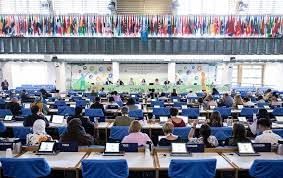
Why in News?
Delegates from around the world have convened in Rome, Italy for the 19th session of the Commission on Genetic Resources for Food and Agriculture (CGRFA).
What is Commission on Genetic Resources?
| Description | |
| Establishment | Established in 1983 by the FAO |
| Membership | 181 member countries including India |
| Governing Body | Bureau consisting of Chairperson, Vice-Chairpersons, and FAO representative |
| Mandate | Promote conservation and sustainable use of genetic resources for food and agriculture |
| ITPGRFA | Responsible for implementing the International Treaty on Plant Genetic Resources for Food and Agriculture |
| Functions | Address specific areas such as plant genetic resources, animal genetic resources, and digital sequence information |
| Global Goals | Contributes to SDG 2 on Zero Hunger and sustainable agricultural development |
Focus areas
- The session will focus on three main topics:
- Review of work on biodiversity, nutrition, and human health.
- Access and benefit-sharing for food and agriculture.
- Digital sequence information for food and agriculture.
- Biodiversity for food and agriculture.
- The role of genetic resources in mitigating and adapting to climate change.
- Forest genetic resources.
- Microorganism and invertebrate genetic resources, including pollinators and biological control agents.
- Animal genetic resources
Source: The Hindu
|
38 videos|5293 docs|1118 tests
|





















